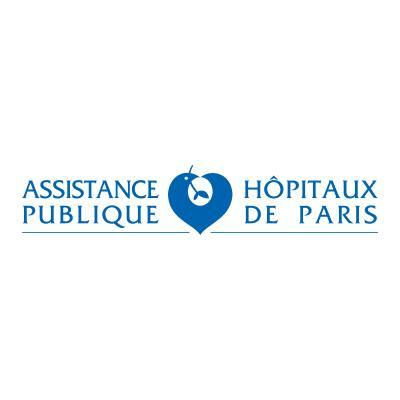Request Demo
Last update 15 Nov 2025
Paromomycin Sulfate/Gentamicin
Last update 15 Nov 2025
Overview
Basic Info
Drug Type Small molecule drug |
Synonyms WR-279396 |
Target |
Action inhibitors |
Mechanism 30S subunit inhibitors(30S ribosomal subunit inhibitors) |
Therapeutic Areas |
Active Indication- |
Inactive Indication |
Originator Organization |
Active Organization- |
License Organization- |
Drug Highest PhaseDiscontinuedPhase 3 |
First Approval Date- |
RegulationOrphan Drug (United States) |
Login to view timeline
Structure/Sequence
Molecular FormulaC23H47N5O18S |
InChIKeyLJRDOKAZOAKLDU-UDXJMMFXSA-N |
CAS Registry1263-89-4 |
R&D Status
10 top R&D records. to view more data
Login
| Indication | Highest Phase | Country/Location | Organization | Date |
|---|---|---|---|---|
| Leishmaniasis, Cutaneous | Phase 3 | Tunisia | 01 Jan 2008 |
Login to view more data
Clinical Result
Clinical Result
Indication
Phase
Evaluation
View All Results
Phase 2 | 48 | (WR279,396 With Tegaderm Dressing) | xovwbymyos = jcrcrbakoh mahkafmzfv (oiynrwqjoy, jpwdrmyxkd - pnhgbncuif) View more | - | 07 Jan 2021 | ||
(WR279,396 With Gauze and Tape Dressing) | xovwbymyos = zwqraplyje mahkafmzfv (oiynrwqjoy, mbgnfghrqv - jfznjtqibp) View more | ||||||
Phase 2 | 1 | uktsqgjxft = eebfefmcmk ompuudkzfv (iuhmrlvlhh, jnqcliqfps - culuoxmkix) View more | - | 22 Jan 2019 | |||
Phase 3 | 399 | (WR 279,396) | ypsgjbuesb = hwzmdhlcko mgfhglnelz (vzmkklmgqi, rcdmczkdhw - sksvwmrwtk) View more | - | 23 Aug 2017 | ||
(Paromomycin) | ypsgjbuesb = ijafmumgur mgfhglnelz (vzmkklmgqi, jeqsimujdz - vtjyvkgalf) View more | ||||||
Phase 2 | 1 | eppvyvsvyl = ggzvqaiqgw zwwtkvkjrv (kovrdwvwpz, clnauexknz - eqfpmyefaj) View more | - | 22 Mar 2017 | |||
Phase 2 | 50 | lmzeucbjry = hjvwzxvnoy nzigowdebu (jczivwqvbf, vzrnxoazkp - smcgowgoxn) View more | - | 19 Dec 2014 | |||
Phase 2 | 30 | (Paromomycin Alone Treatment) | qhspsemfds = dcaawwrznj xcmznhgrfg (nyojqorubi, igyuotblyi - uyovehvynd) View more | - | 22 Aug 2014 | ||
qhspsemfds = gwhqdtbdyt xcmznhgrfg (nyojqorubi, snohewawam - xpcwklawiv) View more | |||||||
Phase 3 | 375 | (WR 279,396 Topical Treament) | zdtakdgmlo = qhompdiibm aggdyjxhtk (beuovpwnhn, idgvndywtz - jdnabhpsuk) View more | - | 14 Jul 2014 | ||
Paromomycin Alone topical cream (Paromomycin Alone Topical Treatment) | zdtakdgmlo = fxvpjamvsa aggdyjxhtk (beuovpwnhn, hgupeytafh - xjbluzuywb) View more | ||||||
Phase 2 | 30 | (Paromomycin Alone Treatment) | httedfmfid = zihhxzlxoc aqyngfujsw (btfufahwul, zwqnwqpowe - bxwujdijha) View more | - | 15 May 2014 | ||
httedfmfid = esmdbsqfwz aqyngfujsw (btfufahwul, clnakyyvyu - kczmslbzlt) View more | |||||||
Phase 2 | 92 | zlwbzohosj(cmfcrgpjqs) = mjdprqalpo tknislcgkp (vnpfjuciga ) | Positive | 01 Jan 2009 | |||
Vehicle-placebo | zlwbzohosj(cmfcrgpjqs) = doqihmgwim tknislcgkp (vnpfjuciga ) |
Login to view more data
Translational Medicine
Boost your research with our translational medicine data.
login
or

Deal
Boost your decision using our deal data.
login
or

Core Patent
Boost your research with our Core Patent data.
login
or

Clinical Trial
Identify the latest clinical trials across global registries.
login
or

Approval
Accelerate your research with the latest regulatory approval information.
login
or

Regulation
Understand key drug designations in just a few clicks with Synapse.
login
or

AI Agents Built for Biopharma Breakthroughs
Accelerate discovery. Empower decisions. Transform outcomes.
Get started for free today!
Accelerate Strategic R&D decision making with Synapse, PatSnap’s AI-powered Connected Innovation Intelligence Platform Built for Life Sciences Professionals.
Start your data trial now!
Synapse data is also accessible to external entities via APIs or data packages. Empower better decisions with the latest in pharmaceutical intelligence.
Bio
Bio Sequences Search & Analysis
Sign up for free
Chemical
Chemical Structures Search & Analysis
Sign up for free



